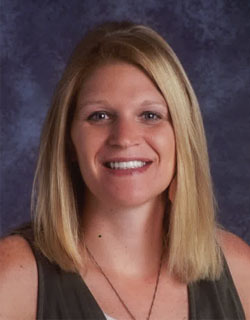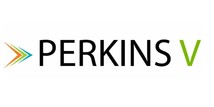|
Having trouble viewing this email? View it as a Web page.
|
|
 Volume 12, Issue 3 October 2021 educateiowa.gov
|
|
Inside this issue
Jeremy Varner
Administrator, Division of Community Colleges and Workforce Preparation
515-281-8260
jeremy.varner@iowa.gov
Dennis Harden
Chief, Bureau of Career and Technical Education
515-281-4716
dennis.harden@iowa.gov
Amy Gieseke
Chief, Bureau of Community Colleges
515-858-2234
amy.gieseke@iowa.gov
Alison Jepsen
Executive Officer, Division of Community Colleges and Workforce Preparation
515-314-8328
alison.jepsen@iowa.gov
|
|

If making an impact in a school district takes a highly talented and motivated educator, making an impact in four districts takes someone truly exceptional. Fortunately, for the four districts within the Cedar Valley West area, they already know this someone. It’s Stacy Ascher.
Since 2015, Ascher has been the work-based learning coordinator for Aplington-Parkersburg, Gladbrook-Reinbeck, Dike-New Hartford and Grundy Center Community School Districts. Through her role, Ascher coordinates experiences such as job shadows, internships, guest speakers and worksite field trips that help students get a taste of different career paths, which has proven to be highly beneficial.
“Anytime students can get out and about and experience things hands-on is a bonus,” said Aaron Thomas, principal at Aplington-Parkersburg High School. “The job shadowing and internships have been huge for some of our kids to know what they may like.”
Traditionally, work-based learning coordinators provide services to only one school district, but these four smaller schools could not support one individually. As a result, these districts came together with Hawkeye Community College to think creatively on how they could work together.
|
 |
For more information, please contact Kristy Volesky, Education Program Consultant, (kristy.volesky@iowa.gov or (515) 971-0669) or Jane Bradley, Lead Consultant (jane.bradley@iowa.gov or (515) 689-4402).

The College and Career Transition Counselor (CCTC) grant application is currently open. Iowa's current CCTC model can help provide high school juniors and seniors with the additional career-based services needed to be successful after high school graduation. Five start-up grants will be awarded to community college-school district partnerships that create new CCTC positions for the 2022-2023 academic year.
To start an application, log in or create a new account in IowaGrants. The College and Career Counselor Partnership Toolkit is also available on the Department website.
For more information, please contact Katy Blatnick-Gagne, Education Program Consultant, (katy.blatnick-gagne@iowa.gov or (515) 681-6733).
|
|
|
|

A new resource to help school districts plan and manage quality high school internship programs has been released by the Iowa Department of Education.
The Iowa Internship Toolkit provides key details and guidance to schools looking to implement or strengthen their internship opportunities for students. Schools can gain insightful information on how to go through the different stages of launching an internship program, from developing the program and its logistics to evaluating performance and growing future opportunities.
“This toolkit assists with communicating all of the pieces that go into planning and implementing a high school internship program,” said Kristy Volesky, education consultant at the Iowa Department of Education. “Whether a district has a program they want to improve or are developing a new program, the guide allows multiple entry points and information for all work-based learning coordinators to use.”
Developed through a collaborative project between the Iowa Department of Education, Iowa Work-Based Learning Coordinators and Iowa Intermediary Network, the Iowa Internship Toolkit was created in response to educators requesting more information on how to best oversee and strengthen their internships programs.
“With all hands on deck, we were able to bring together viewpoints and needs to address what would be helpful for coordinators,” said Ashley Prieksat, president of the Iowa Work-Based Learning Coordinators. “It is something to refer back to as they build, grow and revise their programs to reflect best practices.”
|
 |
For more information, please contact Kristy Volesky, Education Program Consultant, (kristy.volesky@iowa.gov or (515) 971-0669).

The new Comprehensive Local Needs Assessment (CLNA) will be released on November 1, 2021. All community colleges and school districts will need to complete this review for Perkins V grant funding. In this cycle, stakeholders will review their initial Local Comprehensive Local Needs Assessment that was completed in 2019-2020. Each institution will need a copy of the YR1, 2019-2020 CLNA based on how the recipient applies for Perkins funding in IowaGrants (e.g., local school district (individual Perkins recipient), consortium or community college). This review will need to be completed prior to the submission of the FY23 Perkins Grant.
The Strengthening Career and Technical Education Act for the 21st Century (i.e., Perkins V) introduced the concept of the Comprehensive Local Needs Assessment (CLNA). The needs assessment is to be used by each eligible recipient as a guidepost, informing the development of the local application and, in particular, how the eligible recipient uses its federal Perkins funds.
The local needs assessment must be completed by each eligible recipient of federal Perkins funds, which includes individual school districts, school districts that are part of a consortium and community colleges. The CLNA focuses on six broad elements:
- Student performance
- SIze, scope and quality and implementation of CTE programs/programs of study
- Labor market alignment
- Recruitment, retention and training of CTE educators
- Equity and access
- Safety for CTE program(s)/building(s)/district(s)
The CLNA is to be used by the eligible recipient to inform the development of the Perkins V local application. Eligible recipients are expected to conduct and update the CLNA no less than once every two years, in a manner consistent with the process established by the Iowa Department of Education. The CLNA is intended to ensure eligible recipients are using federal Perkins funds to advance the priorities established in the law, with a focus on better serving special populations, robust stakeholder engagement and ensuring that quality CTE programming is aligned with education and workforce needs.
To help complete the CLNA process this year, a Google form has been developed that will be used during the CLNA stakeholder meeting. This form will streamline the CLNA reviews for 2019-2020 and 2021-2022.
For more information, contact Katy Blatnick-Gagne, Education Program Consultant (katy.blatnick-gagne@iowa.gov or (515) 681-6733), or visit perkins.educateiowa.gov for additional resources.
|

Regional centers connect school districts with access to college course experiences and quality career and technical education (CTE) in high-demand job fields. In the case of the Jones County Regional Center, administered by Kirkwood Community College, strong partnerships with area school districts looking to fulfill student interests and business industry needs helped provide direction on the center’s development.
“A group of educators came together to collaborate on how to help students, the workforce and the economy,” said Kristy Black, executive dean of K-12 partnerships at Kirkwood Community College. “We knew that we could collectively provide these school districts with access to high tech programs, industry-standard equipment and qualified instructors with experience and credentialing.”
Initially, Kirkwood estimated that 200 students were needed to enroll at the center to ensure it could be maintained fiscally; today, they serve over 330 students at that location. Due to these positive results and the rising needs of other school districts and industries, Kirkwood expanded its regional center reach and, since 2015, includes three additional locations in Linn County, Washington County and Johnson County at the University of Iowa campus. Each center is dedicated to providing students with college and training experiences while still in high school.
Community colleges looking to expand their own capacity through regional centers are encouraged to start having conversations with their local school districts. Through the Iowa Department of Education, the state’s Career Academy Incentive Fund (CAIF) awards up to $1 million for projects that expand equitable access to high-quality CTE programs through partnerships between school districts and community colleges. Priority consideration is given to applicants who focus on programming delivered through regional centers. Recent awardees have included regional center projects at Indian Hills Community College, Eastern Iowa Community Colleges and Waterloo Community School District. Community college and school district partnerships can apply for the first round of the 2022 CAIF grant opportunity through Oct. 29.
Read more about the successes of the Jones County Regional Center below.
|
 |
For more information, please contact Jen Rathje, Education Program Consultant, (jennifer.rathje@iowa.gov or (515) 326-5389).

October 18-22 marks the 2021 National Transfer Student Week, which shines a spotlight on the needs and triumphs of transfer students and celebrates the faculty and staff at all institutions who work to support transfer students in their educational goals.
This national week also serves to highlight Iowa as a national leader for transfer student success. 52.2 percent of students who start at an Iowa community college and transfer to any U.S. institution graduate with a bachelor’s degree within three years. This is greater than the national average of 40.4 percent and places Iowa third in the nation overall for community college students that complete a bachelor’s degree within three years of transferring. (Source: NSC 2020 Completing College National and State Reports. Graduation rates determined six years after entry to first college attended. Student could have graduated from any U.S. college, not just the first attended.)
Among the ways Iowa community colleges support transfer students is the creation of transfer majors. Currently, there are 257 transfer majors offered in 27 disciplines across all 15 community college districts. These transfer majors offer a structured pathway to transfer to a four-year institution in a specific discipline.
The theme for this year's National Transfer Student Week, These Transfer Shoes: Step into My Journey, was chosen by the event's founding organization, the National Institute for the Study of Transfer Students (NISTS), as a way to highlight the many paths and experiences transfer students have on their educational journey. NISTS notes that students are transferring more than ever, creating a need for educational institutions to "build awareness of common transfer barriers and the diverse student needs and identities within our transfer populations."
For more information, please contact Kelly Friesleben, Education Program Consultant (kelly.friesleben@iowa.gov or (515) 868-2847).
|

A collaborative project on branding and common course numbering began two years ago, bringing together leaders from each of the community colleges to discuss the best ways to measure and promote their work-based learning programs. Although all of the institutions are committed to and offer various work-based learning opportunities, such as job shadows and internships, each school has often had their own standards for course prefixes and numbers. This variation in how things are named has caused some difficulties in showing the current and accurate status and successes of work-based learning programs as a whole.
“One of the issues we’ve had with our courses is when there are requests from legislators or other partners on how work-based learning is going,” said Chris Russell, education consultant at the Iowa Department of Education. “It can be difficult to track because there are so many disciplines with different prefixes and course numbers. We want to brand the work-based learning courses, so these questions are easier to monitor, and we can confidently say how many students have been affected.”
To assist with branding, the cohort of community colleges has started to implement the uniform course prefix “WBL” for their work-based learning programming. It provides a consistency that helps with collecting necessary data, guaranteeing college credit is earned for students and increasing the college’s overall capacity to provide work-based learning courses.
|
 |
For more information, please contact Chris Russell, Education Program Consultant, (chris.russell@iowa.gov or (515) 321-2023) or Heather Meissen, Education Program Consultant, (heather.meissen@iowa.gov or (515) 326-5378).

Through joint enrollment, Iowa students have the opportunity to enroll in community college courses while in high school. This allows students to experience potential fields of study early and earn valuable college credits, industry-recognized credentials and even degrees while still attending high school, oftentimes at little to no cost to the student’s family. Over 97 percent of all joint enrollees access courses through a program known as concurrent enrollment, which is paid through a contractual agreement between the high school and community college.
Joint enrollees can get accustomed to the types of courses and expectations required at the college level. This can promote a healthy transition between high school and college and encourage students to enroll in postsecondary education immediately after graduation, often to continue the studies they started during joint enrollment. Students who engage in joint enrollment are also more likely to have higher grade point averages during college and are more likely to complete their college programs.
Currently, Iowa is one of the top states for joint enrollment participation. During the 2019-20 school year, joint enrollment reached an all-time high of 51,800 students, which was a 2.4 percent increase from the previous year. Most of these students enrolled in courses featuring English language and literature, social science and history, mathematics, health care sciences and life and physical sciences.
Read more about the success stories of recent joint enrollment students below.
|
 |
 |
For more information, please contact Jen Rathje, Education Program Consultant, (jennifer.rathje@iowa.gov or (515) 326-5389).

The new State of Iowa Curriculum System (STICS), which maintains all of the state approved course and program data for the state’s 15 community colleges, goes live on October 25th. The system provides a setting for the approval workflow of new courses and programs as well as modifications to those programs already present in college catalogs. STICS contains a live public version of the comprehensive credit course and program catalog giving Iowa colleges and other stakeholders the opportunity to research and review a complete picture of the offered credit content. Upon go-live, various program and course submission processes will be open to receive new information from the colleges. There are over 15,000 active college courses and over 1300 active program awards in the database for Iowa’s community colleges. STICS is replacing the previous version of a state database, CurricUNET.
Consultants at the Department of Education are receiving training in mid-October and then each college has one or more system administrators who will receive an overview of the system on October 27th. More individualized college training on each of the course and program data submission processes will be scheduled through early November. Since STICS is a new system, testing and training will be ongoing in the short-term for each type of data submission by both these college staff and the staff in the Department. During the remainder of the calendar year, additional reports and system functionality and features will be added to the software. The website for STICS can be accessed at https://www.iowastics.com.
For more information, please contact Chris Russell, Education Program Consultant, (chris.russell@iowa.gov or (515) 321-2023) or Heather Meissen, Education Program Consultant, (heather.meissen@iowa.gov or (515) 326-5378).
|
|
|
Iowa Department of Education
400 E 14th Street
Grimes State Office Building
Des Moines, Iowa 50319
Ph: 515-281-5294
www.educateiowa.gov
|
|
|
|